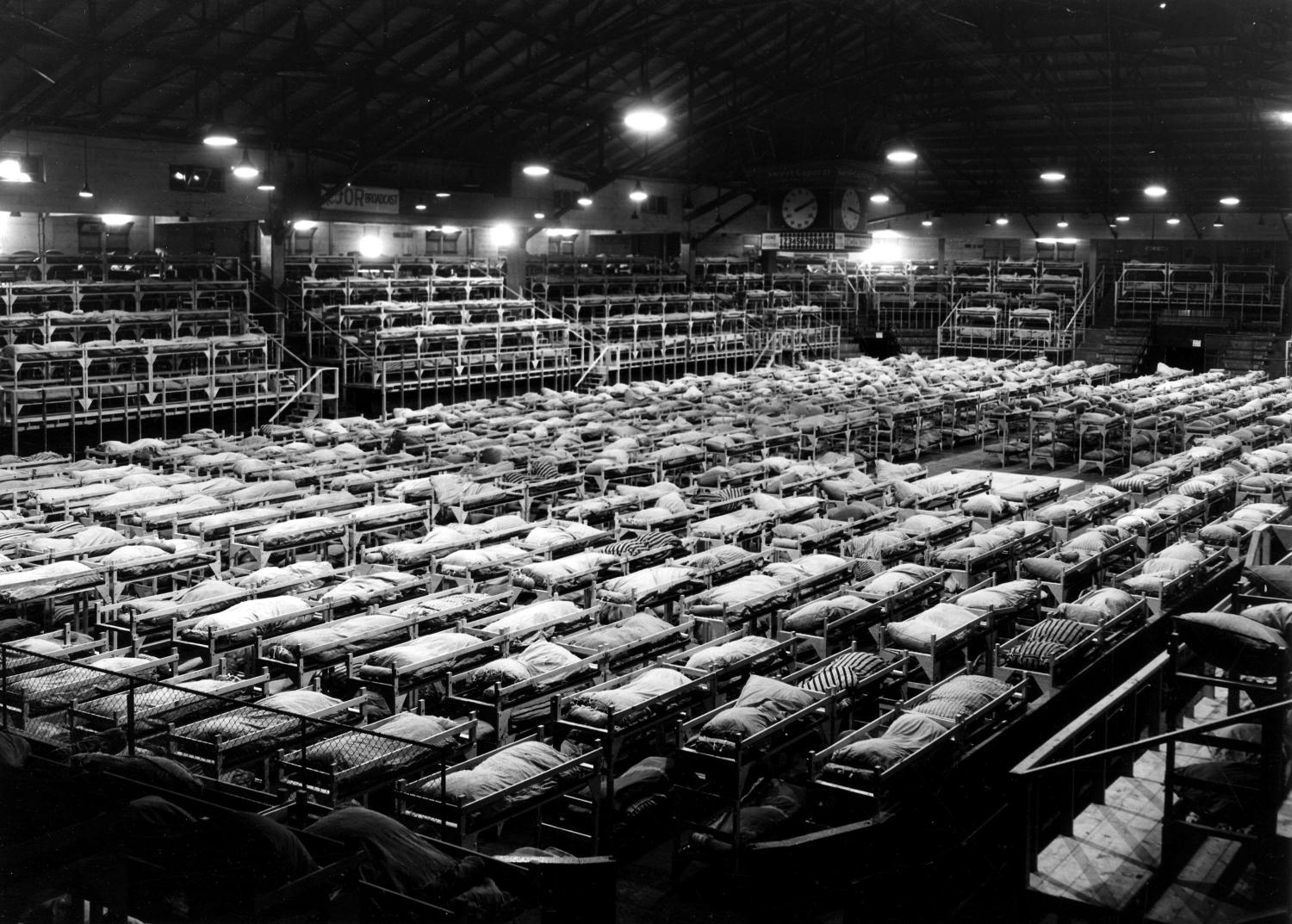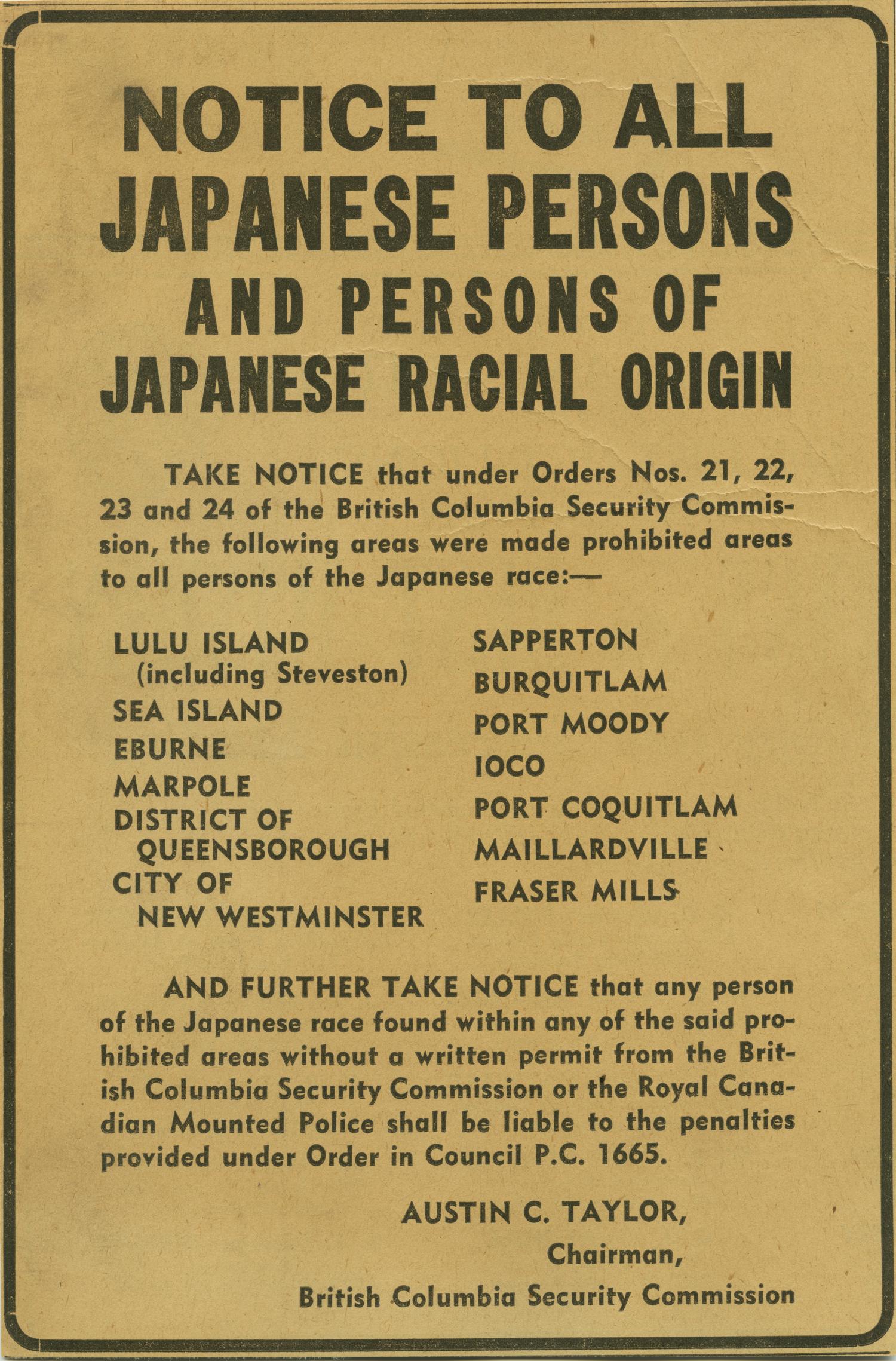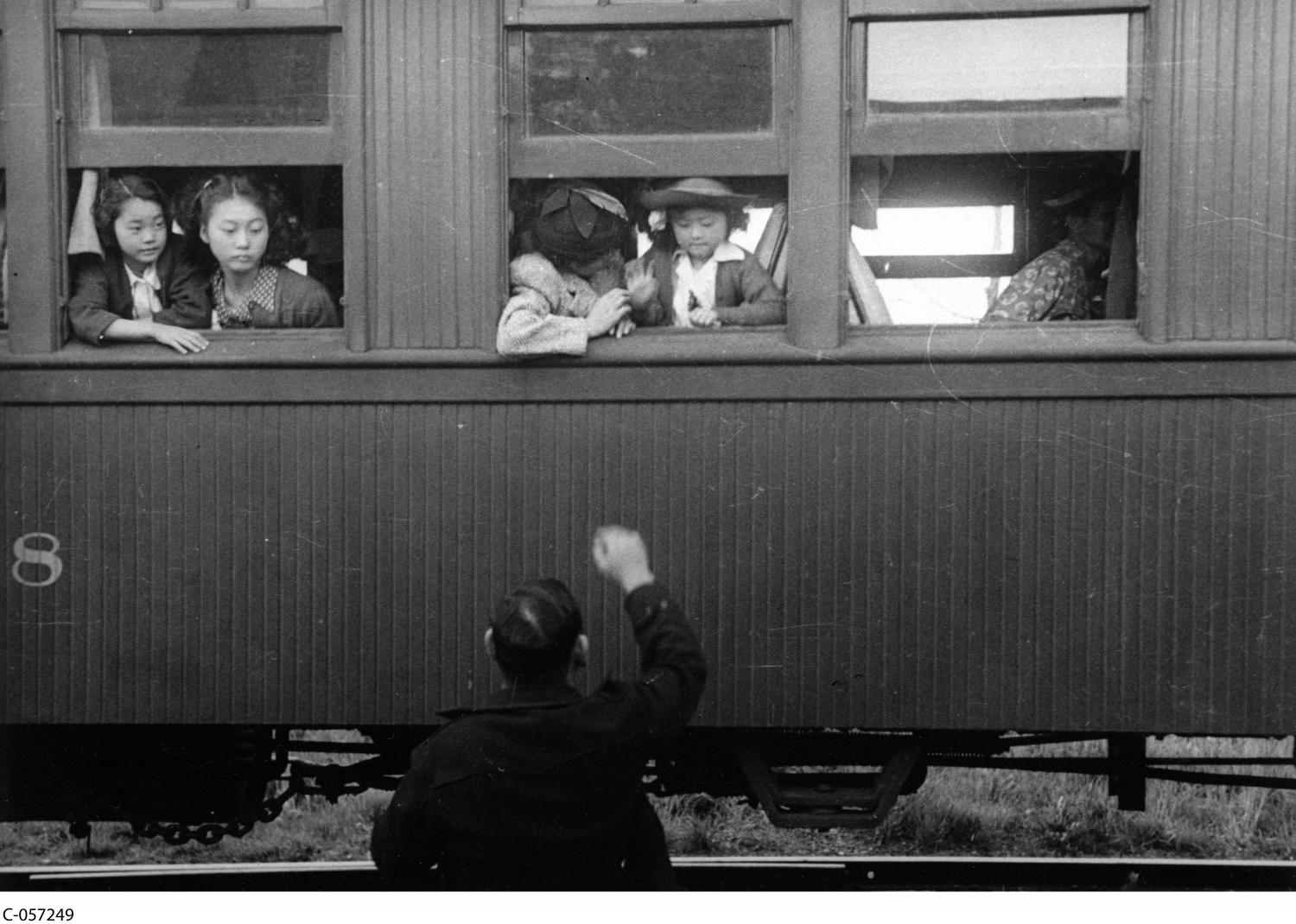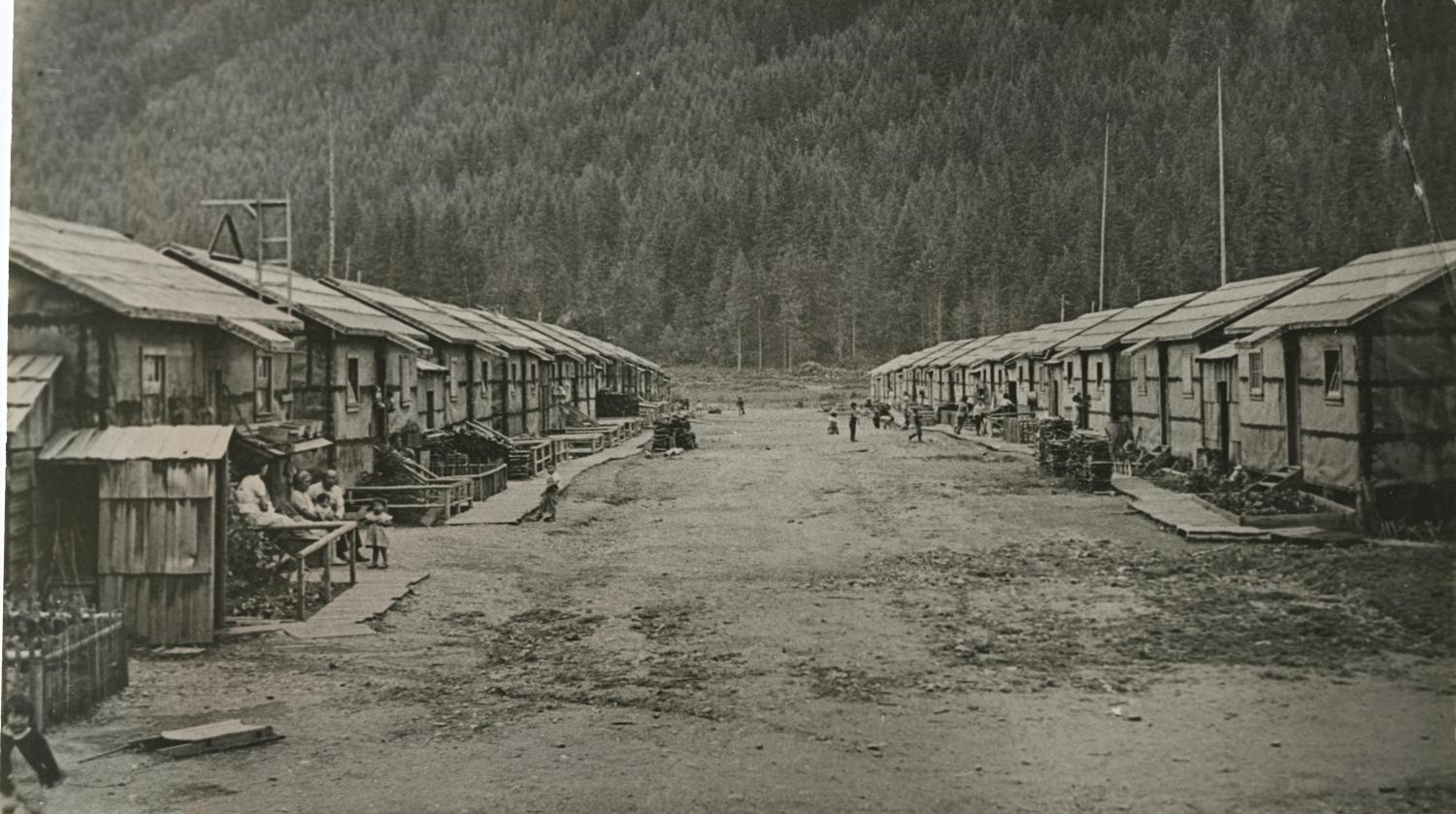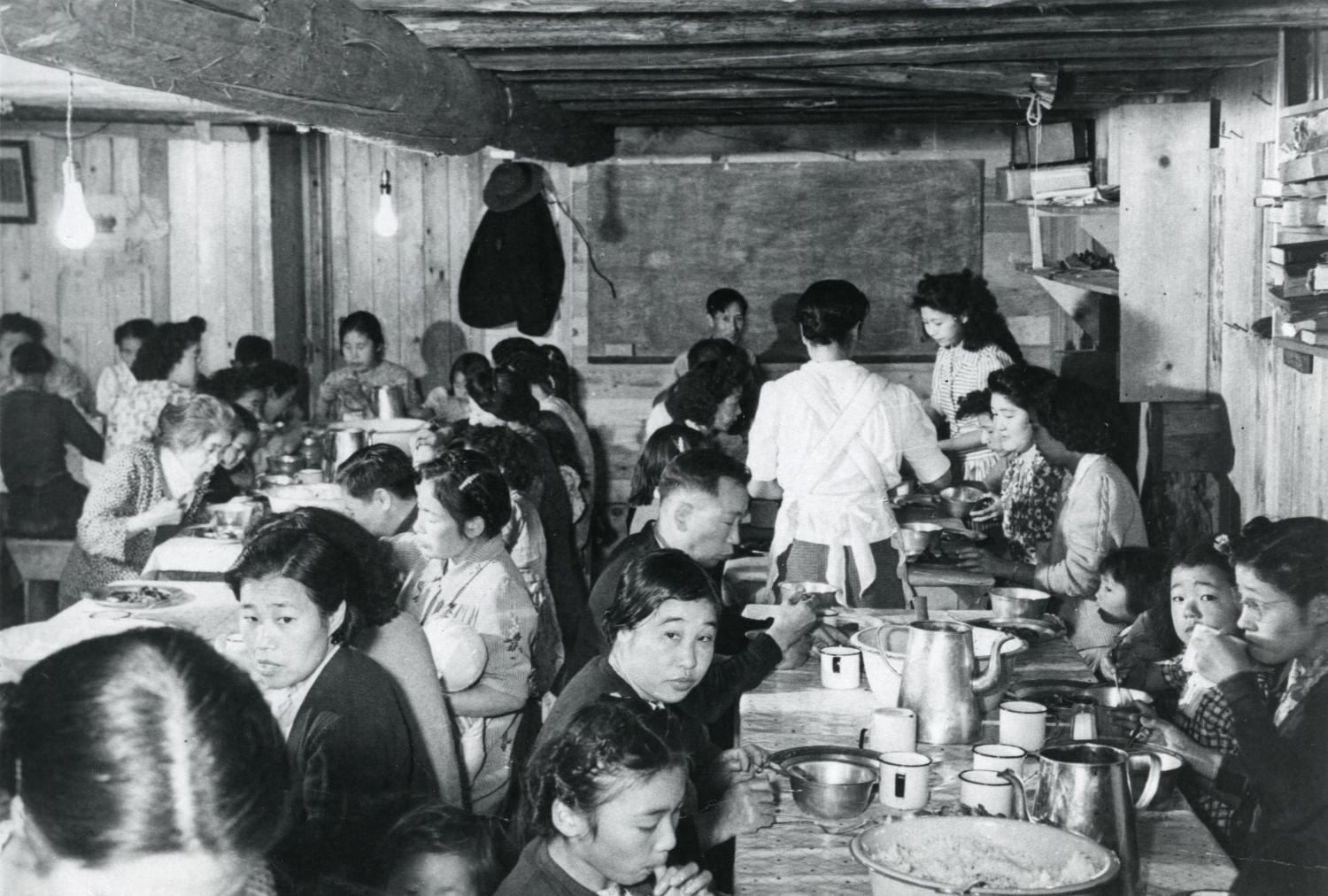Japanese Internment
The government targets more than 20,000 Japanese Canadians in a cruel wartime measure
Date: 1942
While anti-Japanese sentiment was nothing new in British Columbia, it came to a head in December 1941 when Japan bombed Pearl Harbour during the Second World War. Soon after, white British Columbians began calling for the government to do something about the Japanese “menace” living among them. The government obliged.
Starting in January 1942, the Canadian government announced that Japanese-Canadian men would be prohibited from fishing along the B.C. coast for the rest of the war. Twelve hundred fishing vessels owned by Japanese Canadians were seized and sold to non-Japanese fishers. The government then announced that men of Japanese descent — and later, women — were to be relocated. First, crammed into animal sheds in Hastings Park in Vancouver, then shuttled to ghost towns in the Interior that had been turned into makeshift internment camps and other locations further east .All of this, the government said, was “for reasons of national security.” The military refused to carry out the orders, arguing that these people posed no threat. As a result, the government had to create a new organization to oversee relocation and internment: the British Columbia Security Commission.
More than 20,000 Japanese Canadians living in B.C. were uprooted from their homes near the coast. The government sent approximately 12,000 to rural parts of the Interior like New Denver and Lemon Creek. Thousands of others were moved elsewhere in Canada, with some forced to work on farms in Alberta and Manitoba. Sheltered in abandoned houses and flimsy shacks, their living conditions were abysmal, and food was scarce. Things were so dire that Japanese citizens across the Pacific sent over supplies with the help of the Red Cross. Meanwhile, the homes, businesses, and valuables of those in the camps were confiscated and sold for profit by government officials in what would prove to be one of the most heinous acts committed by the Canadian government in the country’s history.
Even as the war came to a close in 1945, and the camps began to close, Japanese Canadians were not allowed to return to their homes west of the Rocky Mountains. Instead, Prime Minister Mackenzie King presented them with two options: either resettle east of the Rockies or “voluntarily repatriate” to Japan. This policy would remain in place for the next four years.
Sources:
- "British Columbia Security Commission." Royal British Columbia Museum Archives, 6 May 2021, https://search-bcarchives.royalbcmuseum.bc.ca/british-columbia-security-commission.
- Marsh, James H. Japanese Canadian Internment: Prisoners in Their Own Country. The Canadian Encyclopedia, 23 Feb. 2012, www.thecanadianencyclopedia.ca/en/article/japanese-internment-banished-and-beyond-tears-feature.
- McAllister, Kirsten Emiko. Terrain of Memory. UBC Press, 2011.
- Robinson, Greg. "Internment of Japanese Canadians." The Canadian Encyclopedia, 15 Feb. 2017, https://www.thecanadianencyclopedia.ca/en/article/internment-of-japanese-canadians.
- Stranger-Ross, Jordan, et al. “Japanese Canadians in the Second World War.” Canadian History: Post-Confederation, BC Open Textbook Project, opentextbc.ca/postconfederation/chapter/6-17-japanese-canadians-in-the-second-world-war/.
- Sunahara, Ann Gomer. The Politics of Racism. Nikkei National Museum & Cultural Centre, 2020.

